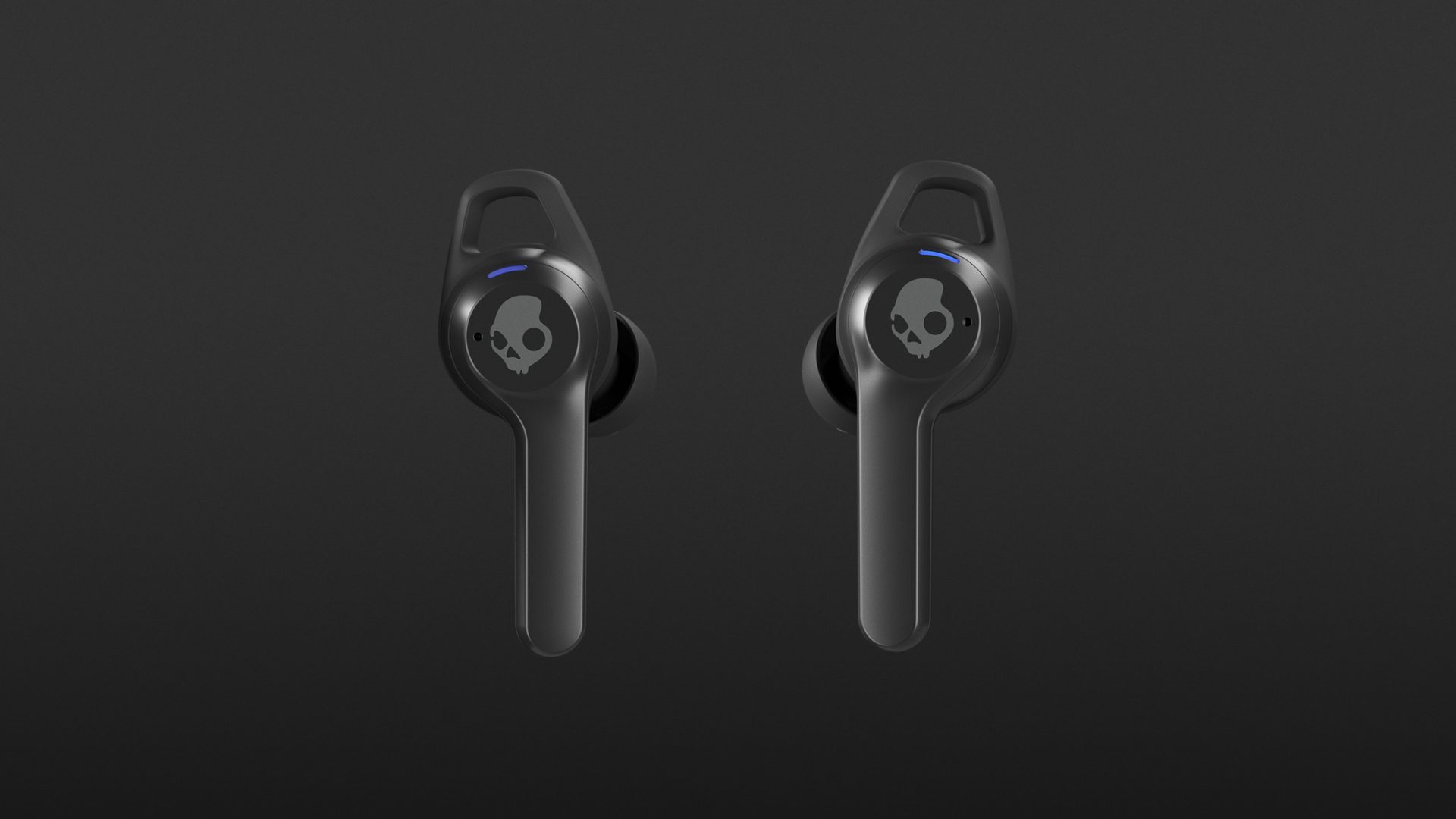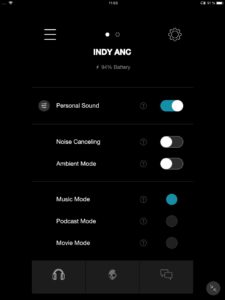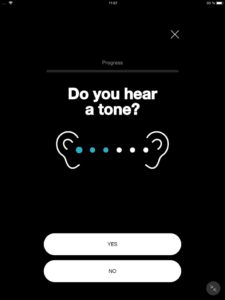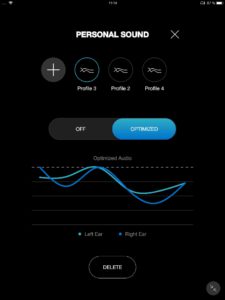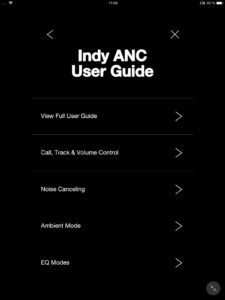Skullcandy’s Indy ANC score points with a stable, comfortable fit, a long battery life and an individual listening experience using a sound profile, which significantly enhances the somewhat muffled, bass-driven basic sound of these weatherproof True Wireless in-ears. The noise-cancelling and ambient modes offer a successful reduction and amplification of external noise, although the sound quality in ANC mode is compromised by an additional bass boost and a perceptible background noise.
- Comfortable, sporty fit
- Fast charging function
- Battery life
- Extensive touch controls
- USB-C connection plus wireless charging via Qi possible
- Individual sound adjustment via EQ modes and listening profile via the app
- Support AAC format
- No aptX
- Basic sound with muffled bass reproduction
- ANC with perceptible background noise
The Indy ANC wireless in-ears from Skullcandy offer a high level of functionality. These fast-charging earpieces feature active noise cancellation, ambient mode for outdoor awareness and various sound customisation options including three EQ modes as well as a personal sound profile that can be generated via a listening test in the accompanying app.
These ergonomically adapted in-ears are equipped with so-called EarWings, so there is a secure hold in your ear, which also makes them suitable for use during sporting activities. These wings reduce the strain on the auditory canal so that while they have a stable fit, they don’t cause any unpleasant pressure or discomfort, making these earphones comfortable to wear. The housings protrude only slightly, which means they will fit under a cap or hat. These in-ears are also IPX4 sweat- and water-resistant, which means that they are protected from the elements when worn outdoors.
In our endurance test, the Indy ANC’s rechargeable batteries proved to be very powerful with a listening time of just under nine hours at a high volume, although this usage time is reduced to about five hours with the active noise cancellation switched on. When the batteries are empty, it takes 60 minutes to charge the in-ears in the transport case, which also serves as a charging station. For spontaneous use, a quick-charge function can also be used, which provides capacity for two and a half hours or about 60 minutes in ANC mode after ten-minutes of power supply. The earphones can be fully charged twice and half-charged once in the case so that the total runtime with noise cancellation is over 18 hours and about 31 hours in basic mode. The battery reserve of the transport case can be restored in 95 minutes using the USB-C port, for which a corresponding USB-C to USB-A charging cable is included. Alternatively, they can be charged wirelessly via Qi.
Device control
Pairing these True Wireless earpieces, which support Bluetooth standard 5.0 and offered a stable range of up to ten metres within an urban environment, is done upon removal from their case. This turns the system on and automatically puts it into pairing mode while putting the headphones back into the charger turns the system off. Manual switching on and off is also possible and is done by holding the touch-sensitive earpiece surfaces for a long press, and both sides can be used individually in single mode.
Once a wireless connection is established, a double-tap controls the start/stop function, and this is also used to answer and end calls. A triple tap activates voice assistants. The volume can be adjusted by tapping once, reducing on the left and increasing via the right earpiece. It is also possible to select a track by holding down the right-hand side and jump forward or backwards with the left-hand side. Tapping and holding switches between noise reduction, ambient mode and basic sound, while double-tapping plus holding switches between the three available EQ modes. In this respect, the remote offers extensive control options but also means that gestures are susceptibility to misinterpretation. If your timing is right and the multiple taps are not too fast, the touch control reacts quite reliably. When using the phone, we noticed that your own voice can be quite choppy, which limits speech intelligibility, while background noise is attenuated. However, the person on the other end of the call can be understood well.
Sound
In terms of basic sound, the Indy ANC are tuned with an emphasis on bass and have a full, massive low bass which seems quite inconsistent and starts to wobble as soon as it is pushed harder. Therefore in bass-heavy hip-hop or electro productions, the bottom end sounds rather dull and overloaded, while rock and pop songs are reproduced with a full and rich, but not too bulky, bass foundation, which seems much more harmonious. Vocals and lead instruments have a good measure of basic warmth and are reproduced with appealing clarity, which greatly benefits the quality of reproduction. The highs, however, are somewhat more restrained and overall seem unobtrusive, dropping off in the upper ranges. In addition to the Bluetooth standard SBC, these earphones also support the higher-quality AAC format, but they don’t use aptX.
In order to exploit the full sound potential of these in-ears, it is advisable to generate your own sound profile via the app. This is based on a listening test by the Swedish company Audiodo, which analyses the hearing ability of both ears in order to specifically adjust the playback, compensating for imbalances. Using this personal profile, the sound gains clarity and seems to open up, appearing more balanced and brighter, especially as the stereo imaging widens. The lower bass range also sounds more precisely defined and loses its dullness, while the mid and upper frequency ranges come across as more detailed. A strength of this feature is that the individual sound adjustment is permanently stored on the headphones and is thus available independently of the app, but it can be activated or deactivated at any time, allowing you to make a direct listening comparison. In addition, several profiles can be created for different people. Further customisation options are offered by the EQ selector. While Music mode serves as the default setting, Podcast mode aims to provide high intelligibility of voices, meaning the bass reproduction is significantly reduced, resulting in a bright sound image. In contrast, Movie mode is designed for action-packed media, providing a boost in the upper bass range and volume. The only thing missing is the option to make your own EQ settings, which would allow maximum flexibility for ideally adapting the sound to your personal preferences in addition to the listening profile. In this respect, a freely adjustable EQ would be desirable as an update.
ANC and Ambient Mode
When noise cancellation is activated, the bass range is boosted, which makes the basic sound seem even fuller and increases the perceived volume level, but this has a negative effect on the precision of the playback. This is not only a pity it is also unnecessary, as these in-ears already have high isolation properties due to their design, and the ANC mode does a good job, especially in the low and high-frequency ranges, meaning that there is already a noticeable reduction. Only in the mid-frequency spectrum is the attenuation lower, so that louder voices in the immediate vicinity penetrate to the ear, but background conversations do not. However, the existence of background noise, which becomes more discreet in ambient mode, might become annoying. The amplification of external noise via the integrated microphones is also effective so that other people can be clearly understood and a conversation can be held when playback is paused. Even during playback, voices in the immediate vicinity are understandable at a lower volume, while orientation remains possible up to a higher level. A change in sound is not perceptible.
App connection
The free Skullcandy app for Android and iOS systems is clearly laid out and offers direct access to your listening profile, EQ settings, noise cancellation and ambient mode. There is also a battery level indicator, however, it has a small flaw – during our test, it displayed 94, 95 or 98 per cent instead of 100 per cent even when the batteries were fully charged. In addition, a comprehensive user guide is available, and the manual will assist you to set up the optional tracking function available via the Tile app, which helps you to find the earpieces if you lose them.
Technical specifications
- Ear couplingIn-ear
- Typeclosed
- Transducer principledynamic
- Frequency response (headphones)20 - 20.000 Hz
- Impedance32 ohms
- Sound pressure level (SPL)98-103 dB
- Weight without cable6 g each, incl. case 61 g
What's in the box
- EarTips in three sizes (S/M/L)
- EarWings in two sizes (S/L)
- USB-C to USB-A charging cable
- Charging case
Special features
- BT codecs: SBC, AAC
- BT version: 5.0
- BT profiles: HSP, HFP, A2DP, AVRCP






